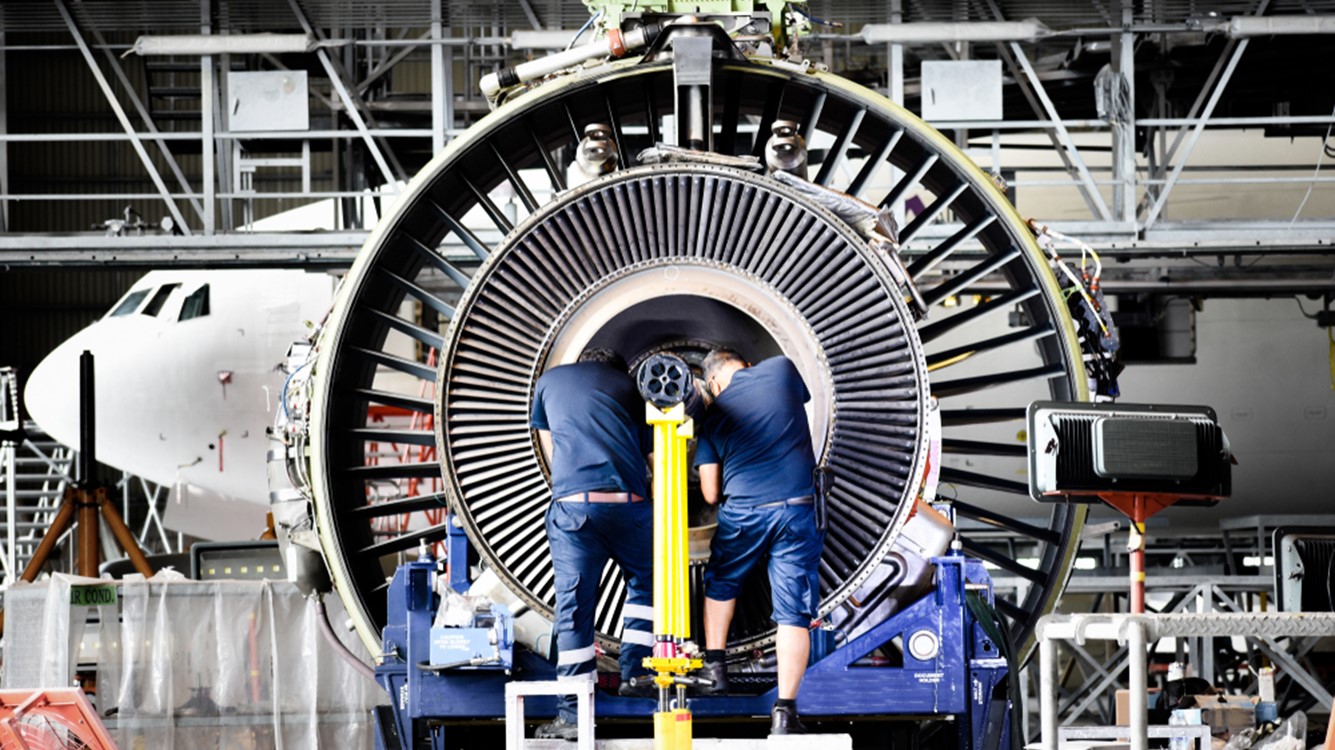Investment slump eases in durable goods
Orders for computers and electronic products took a breather.

March 26, 2024
February durable goods orders rose 1.4%, surpassing expectations for a 1% rise but January orders were revised lower to -6.9% from the previously reported -6.2%. Transportation orders accounted for a major portion of the strength in February orders, although we are beginning to see signs that the manufacturing sector is starting to firm more broadly.
Civilian aircraft orders rose 25%, owing to a pickup in airline orders. Orders for motor vehicles and parts rose 1.8% after weaker readings in the previous two months. Consumers are facing affordability concerns when it comes to vehicle purchases. As a result, automakers are relying more on incentives to sell vehicles, which along with warmer weather helped boost sales in February relative to January. Other related industries posting solid gains included machinery orders, up 1.9%, primary metals, up 1.4%, and fabricated metals, up 0.8%.
Two industries that took a breather in February after months of gains were computers and electronic products orders, -1.4%, and electrical equipment, -1.5%. Both those sectors have benefited from the CHIPS Act, IRA and generative AI demand. Within computers and electronic products orders, communications equipment orders fell 1.6%. The other component of this sector, orders for computer products rose 3.1% in February after rising 6.4% in January. On an annual basis, these orders are up 19%.
The shipments data was weaker for the current quarter. Nondefense capital goods shipments excluding aircraft, which serve as a proxy for nonresidential investment spending in the current quarter, fell 0.4%, missing expectations for a 0.1% increase. That is consistent with our expectation of a 0.5% decline in business investment in the first quarter on a seasonally adjusted, annualized basis.
Core orders, which represent capital goods orders excluding defense and aircraft and are a proxy for future business spending, rose 0.7%, outpacing expectations for a 0.1% increase. That aligns with our outlook for a pickup in capital spending in the second quarter of 3% on a seasonally adjusted, annualized basis.
The improvement in Standard and Poor's Global manufacturing purchasing managers' index (PMI) to 52.5 in March from 50.7 at the start of the year suggests a more favorable outlook for capital investment in the months ahead. An over-50 reading in the PMI is indicative of expanding manufacturing activity.
That aligns with our outlook for a pickup in capital spending in the second quarter of 3%.
Ken Kim, KPMG Senior Economist
Bottom Line
Signs are emerging that the manufacturing sector is bottoming out as evidenced from the improved readings in core orders and the PMI. Firmer business investment would increase the odds of a continuing durable expansion in the overall economy. The Federal Reserve was closer than many realized to penciling in only two instead of three rates cuts for 2024 at the March meeting; the math is getting harder the stronger the economy remains. Much will hinge on whether the move up in services inflation in January and February was a blip. Hence, Fed Chairman Jay Powell's emphasis on watching the inflation data to determine the pace of rate cuts.
Explore more

Durable goods orders disappoint
Two industries that continued to buck the trend included computers and electrical equipment.

KPMG Economics
A source for unbiased economic intelligence to help improve strategic decision-making.

We’re not in Kansas anymore...The view from Washington
Debate over whether the first rate cut will occur in June will be heated.
Meet our team

Subscribe to insights from KPMG Economics
KPMG Economics distributes a wide selection of insight and analysis to help businesses make informed decisions.
